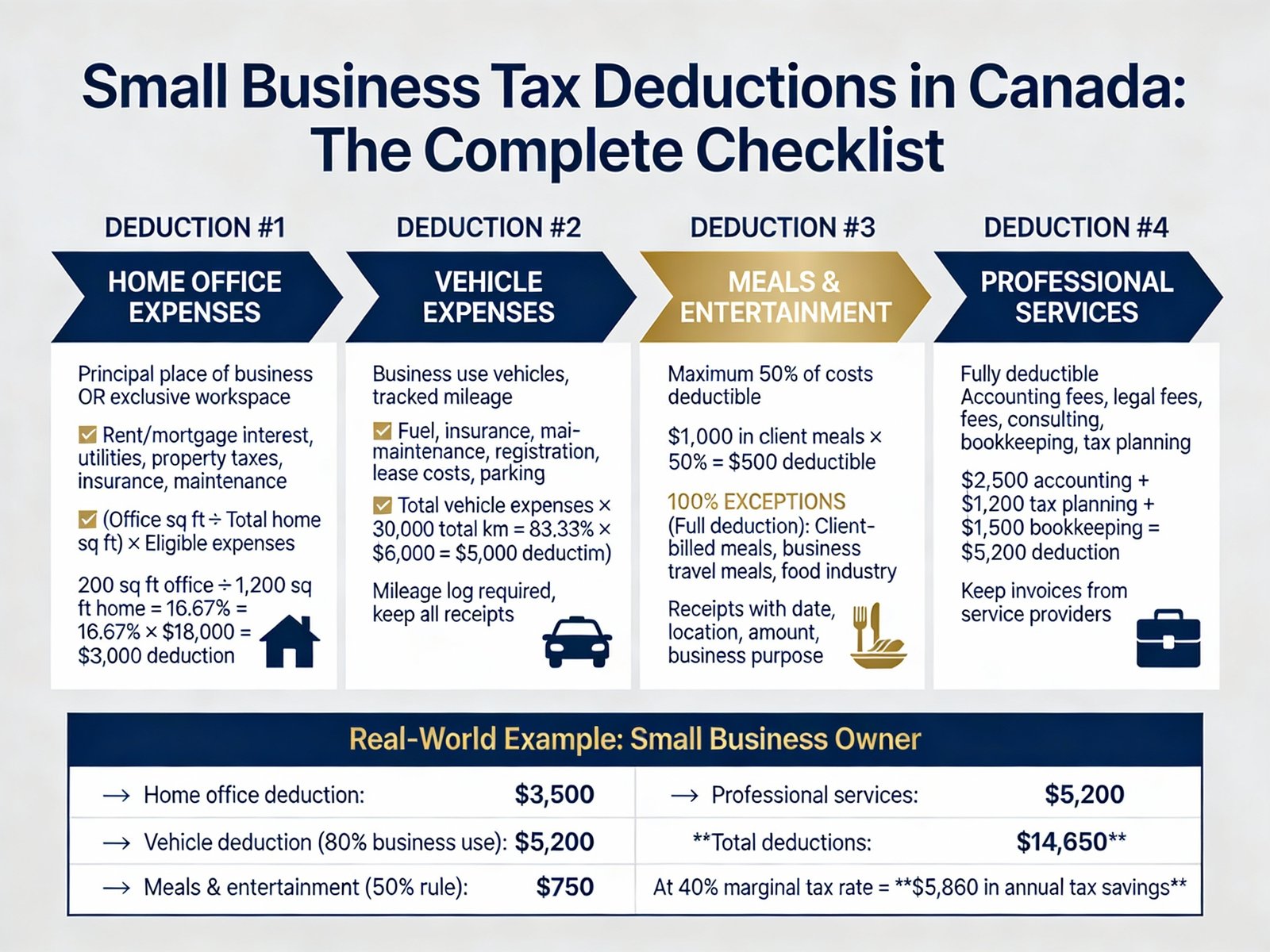Navigating the landscape of corporate taxes in Canada can be a daunting task for businesses of all sizes. Understanding the intricacies of tax rates, deductions, compliance, and reporting requirements is essential to ensure both financial stability and legal adherence. In this comprehensive guide, we will break down the complexities of corporate taxes in Canada, providing a step-by-step overview of key concepts, best practices, and practical strategies to help businesses manage their tax obligations efficiently and effectively.
1. Types of Corporate Taxes in Canada: Explore the different types of corporate taxes in Canada, including federal and provincial corporate income taxes, and gain insight into their rates and how they are calculated.
2. Taxation for Small to Medium-Sized Enterprises (SMEs): Delve into the specific tax considerations and benefits available to SMEs, such as the small business deduction, investment tax credits, and other incentives.
3. Tax Deductions and Write-offs: Learn about common tax deductions and write-offs that businesses can claim to reduce their taxable income, including allowable business expenses, capital cost allowance, and research and development expenses.
4. Tax Planning Strategies: Explore strategic approaches to corporate tax planning, including income splitting, dividend planning, and structuring to maximize deductions while remaining compliant with Canadian tax laws.
5. International Taxation: Understand the implications of international operations on corporate taxes, including foreign tax credits, transfer pricing, and considerations for businesses engaged in cross-border transactions.
6. Tax Compliance and Reporting: Gain insights into the essential compliance requirements for corporate taxes in Canada, including filing deadlines, record-keeping obligations, and effective strategies for accurate reporting.
7. Provincial and Territorial Variations: Recognize the variations in corporate tax rates, incentives, and regulations across different provinces and territories, and the impact these differences can have on businesses’ tax liabilities.
8. Tax Incentives for Innovation and Research: Explore the available tax incentives and credits designed to encourage research and development (R&D) activities and innovation within Canadian businesses.
9. Mergers, Acquisitions, and Restructuring: Understand the tax implications of corporate restructuring, mergers, acquisitions, and divestitures, including rollovers, losses, and how to optimize tax outcomes in these scenarios.
10. The Role of Professional Advisors: Highlight the importance of seeking professional advice from tax experts, accountants, and legal professionals who specialize in Canadian corporate taxation to ensure accurate and compliant tax planning.
Conclusion: Demystifying corporate taxes in Canada is a vital step towards financial success and compliance for businesses operating within the country. By gaining a comprehensive understanding of key concepts, leveraging tax planning strategies, and staying informed about the latest changes in tax laws and regulations, businesses can navigate the complex world of corporate taxation with confidence. This guide aims to equip businesses with the knowledge and tools they need to optimize their tax positions while contributing to Canada’s economic growth and prosperity.










 View Our Location
View Our Location





 181 Meadowview Bay, Sherwood Park, AB T8H 1P7, Canada (Online Clients Only)
181 Meadowview Bay, Sherwood Park, AB T8H 1P7, Canada (Online Clients Only)